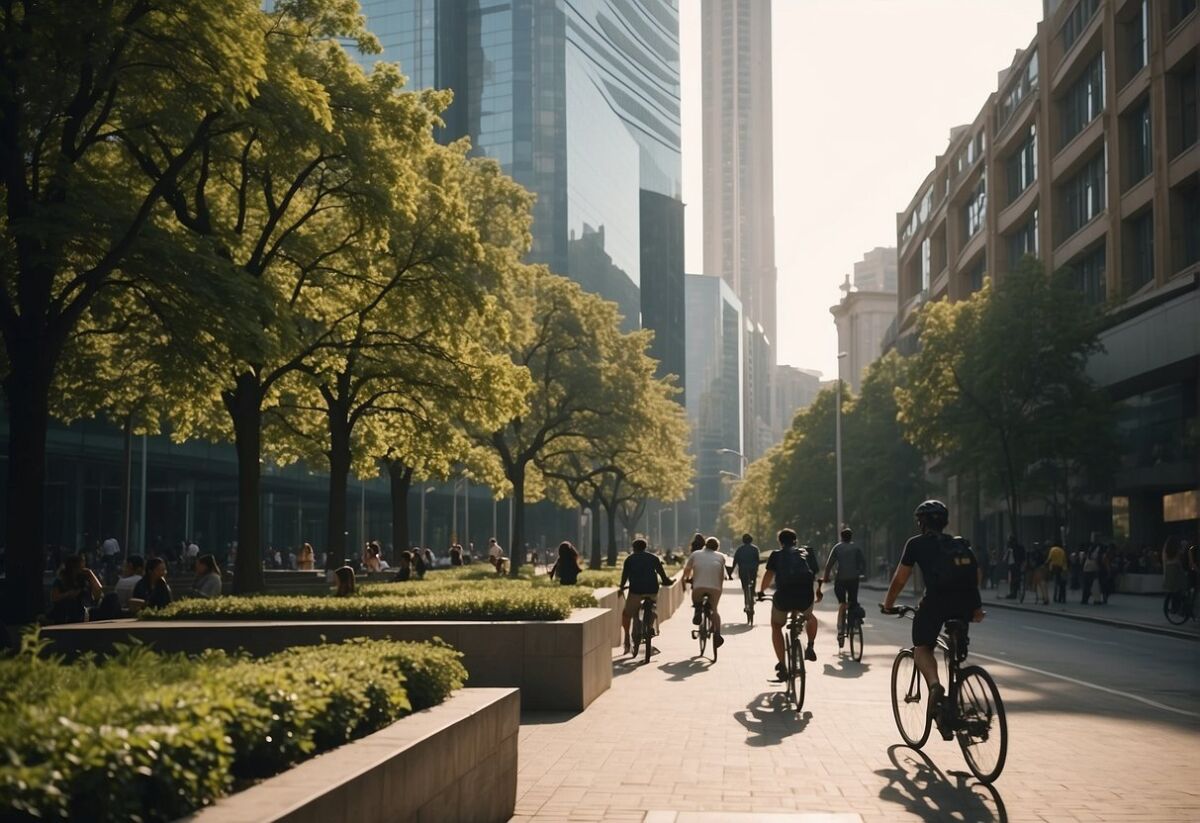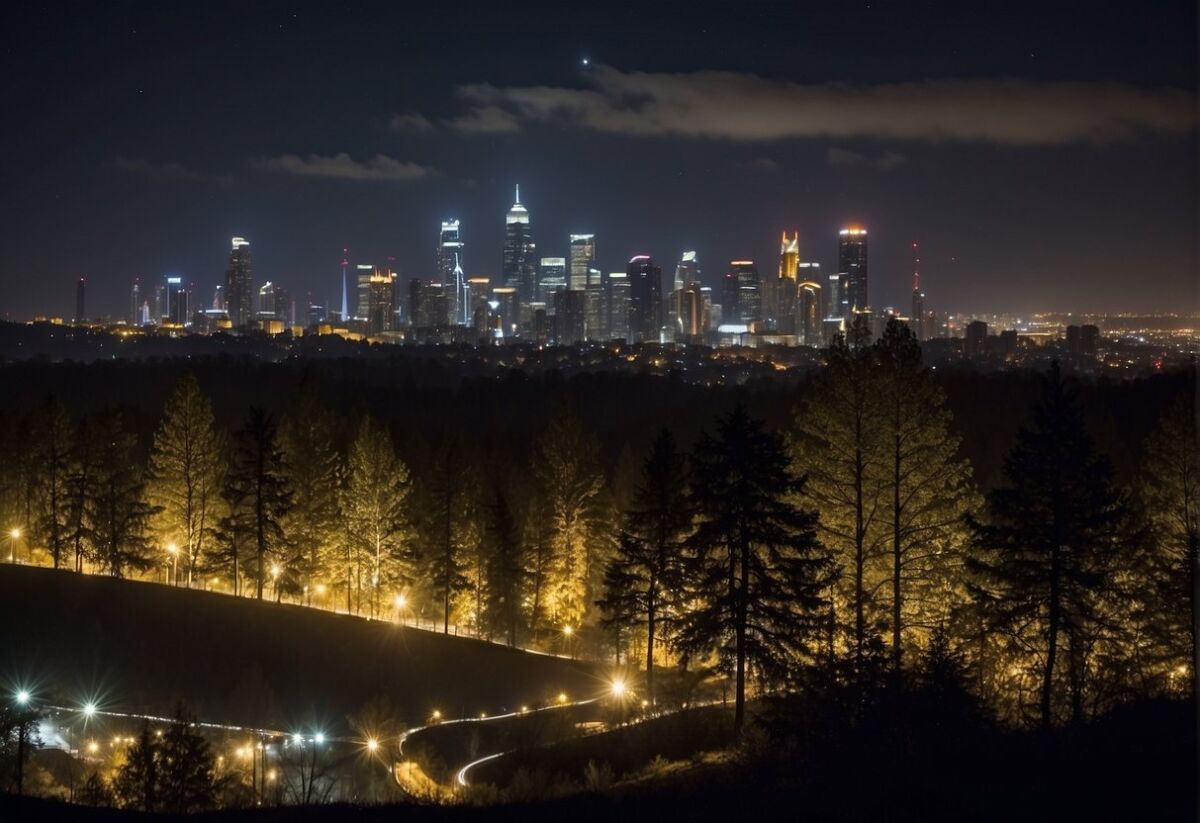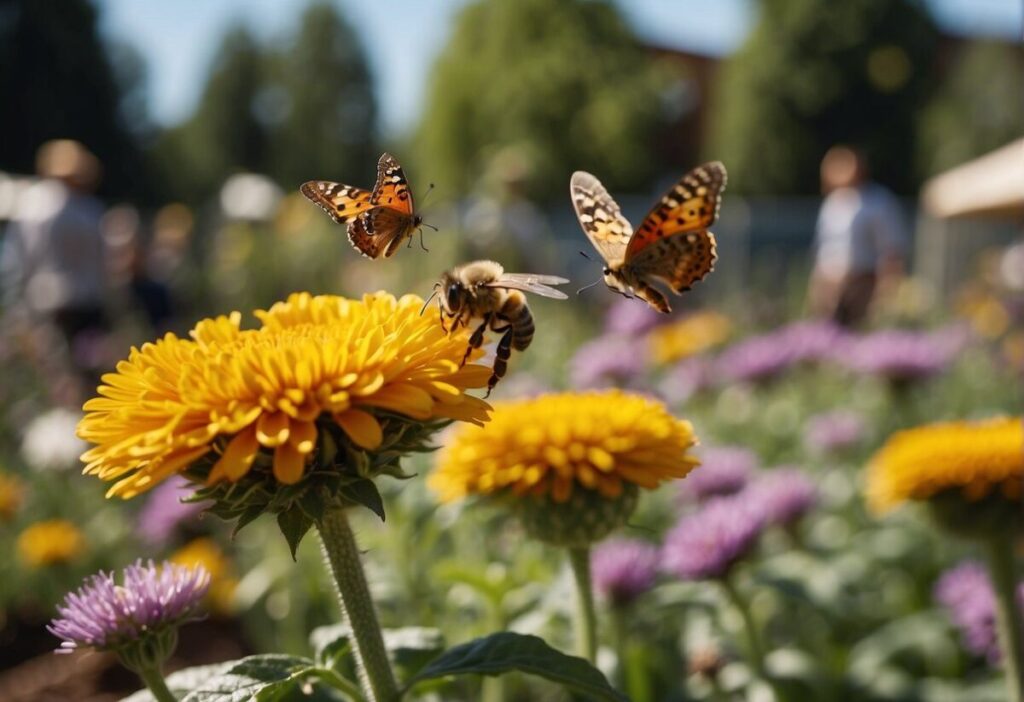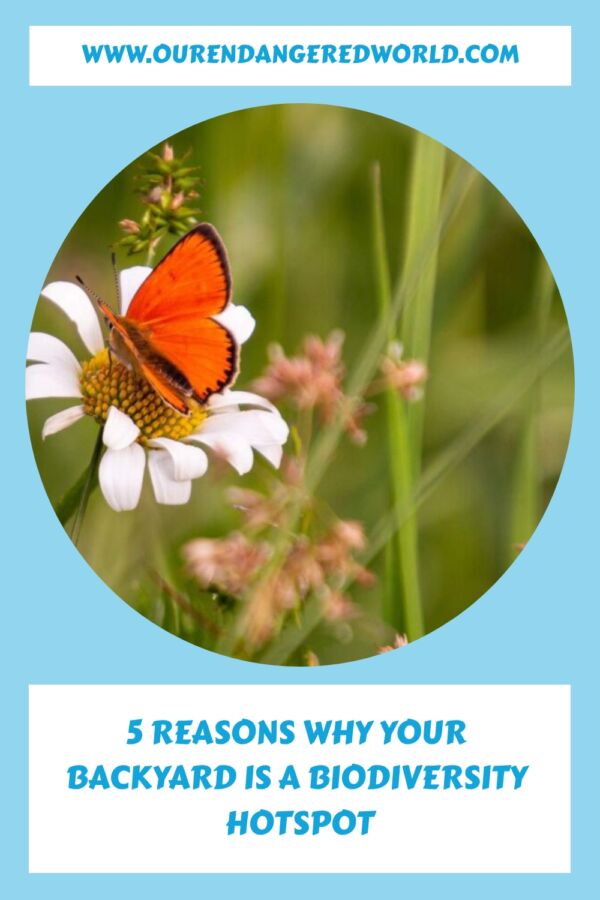Urban conservation is a crucial practice that strikes a balance between the growth of urban areas and the preservation of biodiversity, aiming to mitigate the impact of cities on natural resources and ecosystems.
In cities like Chicago and New Jersey’s Newark and Paterson, initiatives are taking shape to address the challenges that urbanization poses to nature. As you inhabit or visit urban spaces, you become a part of the wider ecology, where your actions directly influence local biodiversity and environmental health.

You can participate in urban conservation efforts prioritizing sustainability and green space creation, contributing to the city’s resilience against climate change.
These efforts are often collaborative, engaging diverse communities and stakeholders to ensure that conservation goals meet the needs of both residents and the environment. Being part of such initiatives, you help foster equity in access to nature and strengthen community bonds through shared green spaces.
Your engagement in urban conservation can range from supporting local projects to increasing greenery in your own neighborhood. Actions like planting native species, advocating for eco-friendly infrastructure, or participating in community science projects can immensely benefit urban ecosystems.
Integrating ecosystem services into city planning ensures that urban conservation is not an afterthought but a foundational aspect of livable, equitable, and sustainable urban environments.
Planting Native Species

When planning your urban green space, incorporating native plants is a transformative step towards fostering biodiversity and enhancing ecosystem services. Native flora naturally sync with local wildlife, providing crucial food and habitats and thus fortifying the relationship between nature and urban growth.
Embrace Nature Conservancy in Your Backyard
- Select Native Plants: Opt for species indigenous to your region to support local ecosystems.
- Contribute to Wildlife: Establish a habitat that attracts birds, pollinators, and other fauna.
Designing for Biodiversity
- Plan for variety: Prioritize a diverse selection of native plants to create a robust habitat.
- Green Infrastructure: Utilize native plants in public parks and neighborhood spaces, integrating green infrastructure into your community.
Australia’s Example
In Australia, protecting threatened species through the cultivation of native gardens is gaining momentum. By utilizing plants endemic to Australia, you enhance the beauty of your surroundings and contribute to the conservation of unique wildlife.
Ecosystem Services and Pollution
Planting native species helps purify air and water, mitigate pollution, and stabilize soils, delivering vital ecosystem services to your urban area.
Remember, even a small backyard or neighborhood park can become a nature conservancy oasis with the right planning. By taking these steps, you help nature thrive amidst urban expansion — emulating The Nature Conservancy’s efforts on a micro-scale right within your locality.
See Related: Top Most Endangered Plants Around the World
Creating Wildlife Corridors

Wildlife corridors are vital in maintaining biodiversity and ecological processes within urban environments. As city planners and landscape architects seek to integrate green spaces into urban planning, you become a key player in this initiative.
Designing Connectivity: Start by identifying fragmented habitats within your neighborhood. Collaboration with community groups and local authorities, such as the Chicago Park District, can help map out potential corridors. You support urban wildlife by reimagining vacant lots and undervalued spaces as part of an interconnected green network.
- Key Components for Urban Green Spaces:
- Native plants to support local fauna
- Urban farms to promote community engagement and local biodiversity
- Clean water bodies to enhance water quality and serve aquatic life
As for implementation, a narrow focus on design ensures that these corridors provide safe passageways for animals, facilitating movement and interaction.
Engaging with Urban Growth: Your influence can extend into lobbying for policies that require or incentivize the integration of wildlife corridors in new developments. Ensure that urban growth includes expanding not just human spaces but also those that cater to flora and fauna.
- Actionable Steps:
- Connect with city planners and share the importance of wildlife corridors for maintaining biodiversity.
- Partner with local landscape architects to assess and design effective corridors.
- Join or support community groups advocating for more green spaces.
- Encourage neighborhoods to plant native species and maintain environments conducive to wildlife.
Through these collective efforts, you empower your community to strike a balance between urban development and the conservation of nature right in the city’s heart.
See Related: Incredible Animals Associated With Healing
Reducing Light Pollution

When it comes to urban conservation, reducing light pollution is a critical step you can take to help safeguard wildlife and bolster sustainability.
Cities teeming with lights from buildings and streets contribute to what’s known as skyglow, a major component of light pollution. This brightness obscures the stars and disrupts the natural behaviors of birds, amphibians, reptiles, and mammals, including iconic species like the peregrine falcon.
Aligning with Best Practices in Planning
Incorporate best practices into urban development. Work with community groups, stakeholders, and city planners to ensure lighting design aligns with the conservation goals and mental health of the community inhabitants. Advocate for green space inclusion in urban areas, which can serve as dark havens in a city’s lighting landscape.
Embracing Sustainable Lighting Solutions
- Use motion sensors and dimmer switches to reduce unnecessary light.
- Install downward-facing lights to minimize light trespass.
- Opt for warm-colored LEDs to lower glare and help maintain ecosystem services.
Contribution of Green Spaces
Parks and public gardens offer respite for ecosystems battling urbanization. They can reduce pollution and provide habitats that help maintain biodiversity. Communities can establish these spaces to support urban conservation efforts, further contributing to the sustainability of urban areas.
When planning to light, prioritize human needs and the broader environmental impact. By taking these steps, you can contribute to an urban environment that supports robust ecosystems and population health. Your role in reducing light pollution can make a transformative difference.
Encouraging Pollinators

Creating a pollinator-friendly environment can profoundly impact biodiversity in urban areas. Urban conservation is vital in supporting local ecosystems and contributes to global ecological health.
Native Plants: Choose native species that adapt well to your local climate and soil conditions. They require less water and maintenance and are more resilient to local pests.
- Design your green space intentionally to support pollinators. Include a variety of plants that flower at different times to provide a continuous source of nectar and pollen.
- Avoid pesticides and herbicides, as these can harm the insects you’re trying to attract and support.
Urban Greenspaces: Utilize every available space, including backyards, neighborhood parks, and community gardens.
- Urban farms and rain gardens can be designed to attract diverse pollinators while also managing stormwater and reducing pollution.
- Enhance green spaces near your home by planting pollinator-friendly flowers and shrubs.
Conservation Efforts: Participate in or initiate conservation programs within your community.
- Encourage the development of protected areas and support local nature-based solutions to preserve species diversity.
- Contribute to the Intergovernmental Science-Policy Platform on Biodiversity and Ecosystem Services by becoming informed and sharing knowledge with others.
In urban ecosystems, every individual action counts. Your efforts in creating pollinator habitats contribute to the larger goal of urban conservation and promoting biodiversity. Remember, you have the power to make a difference right in your own backyard.


